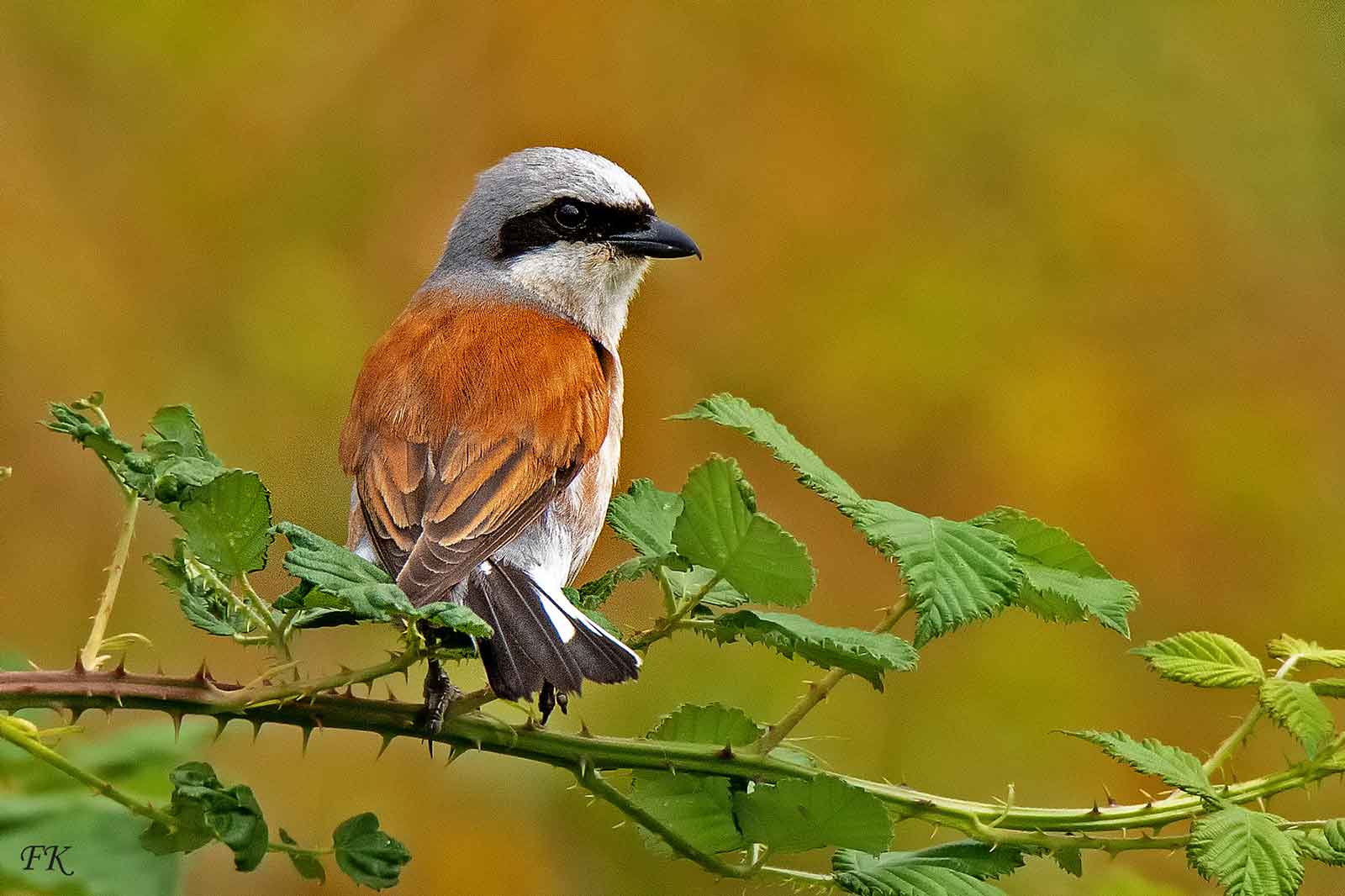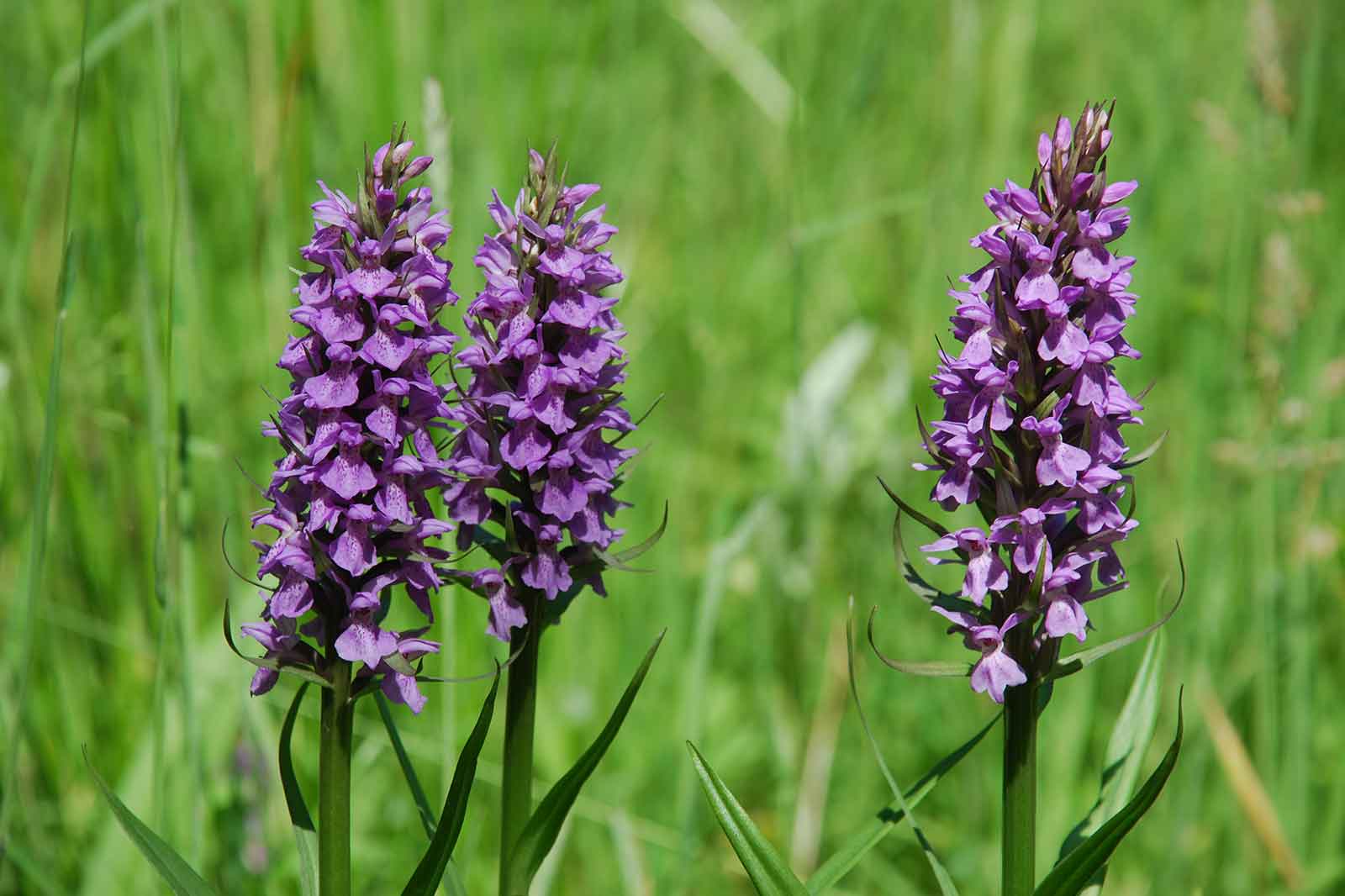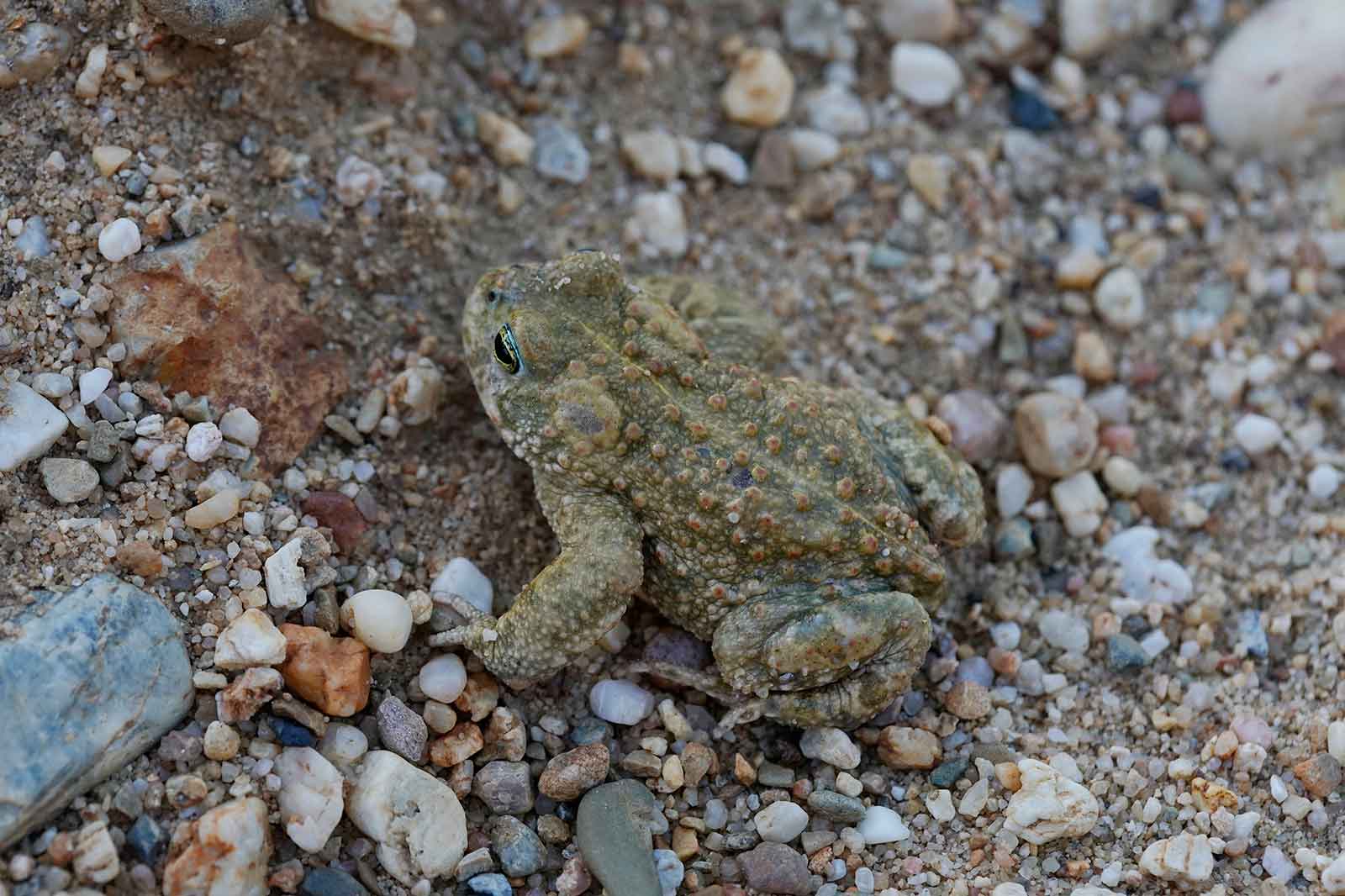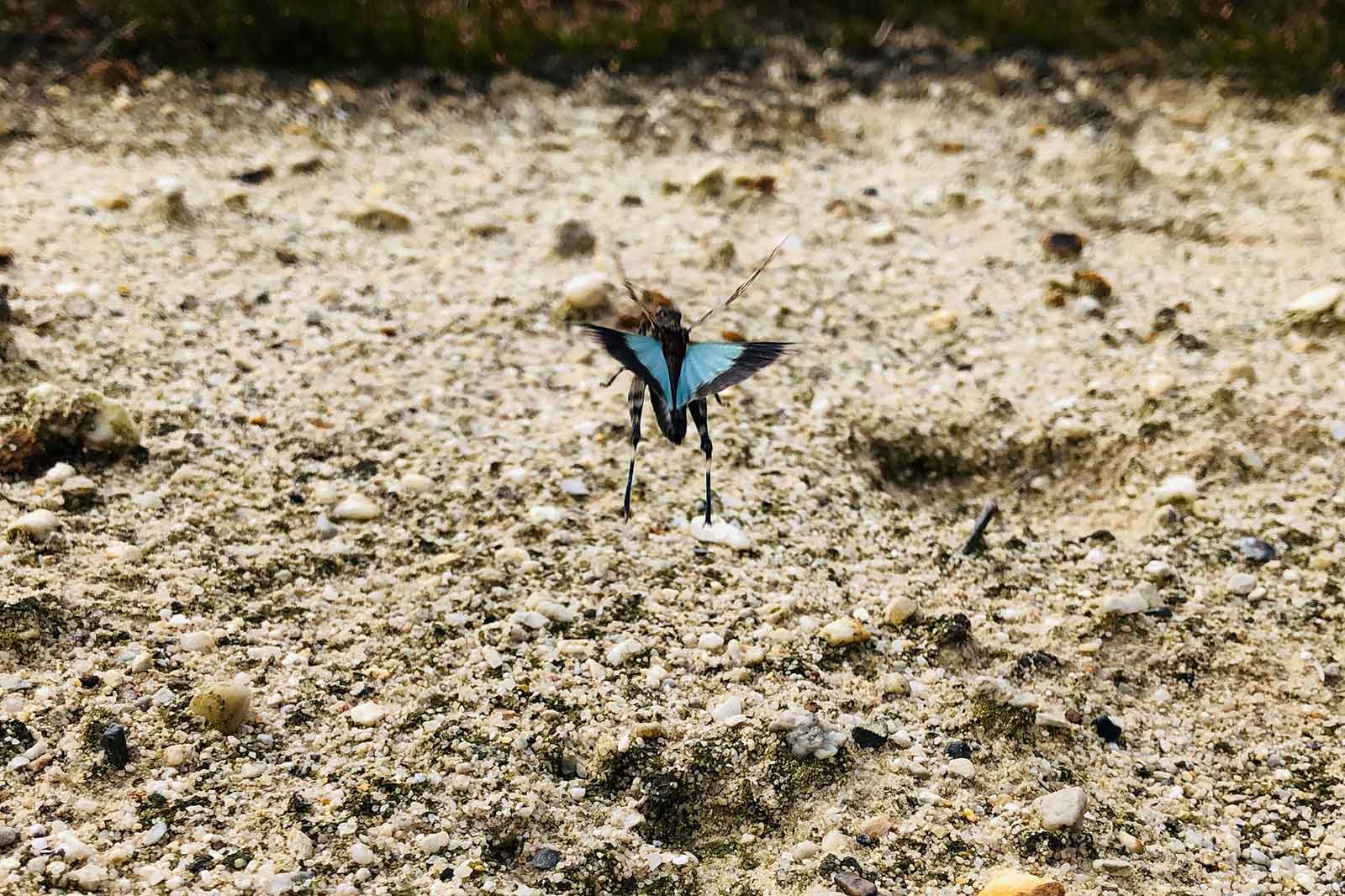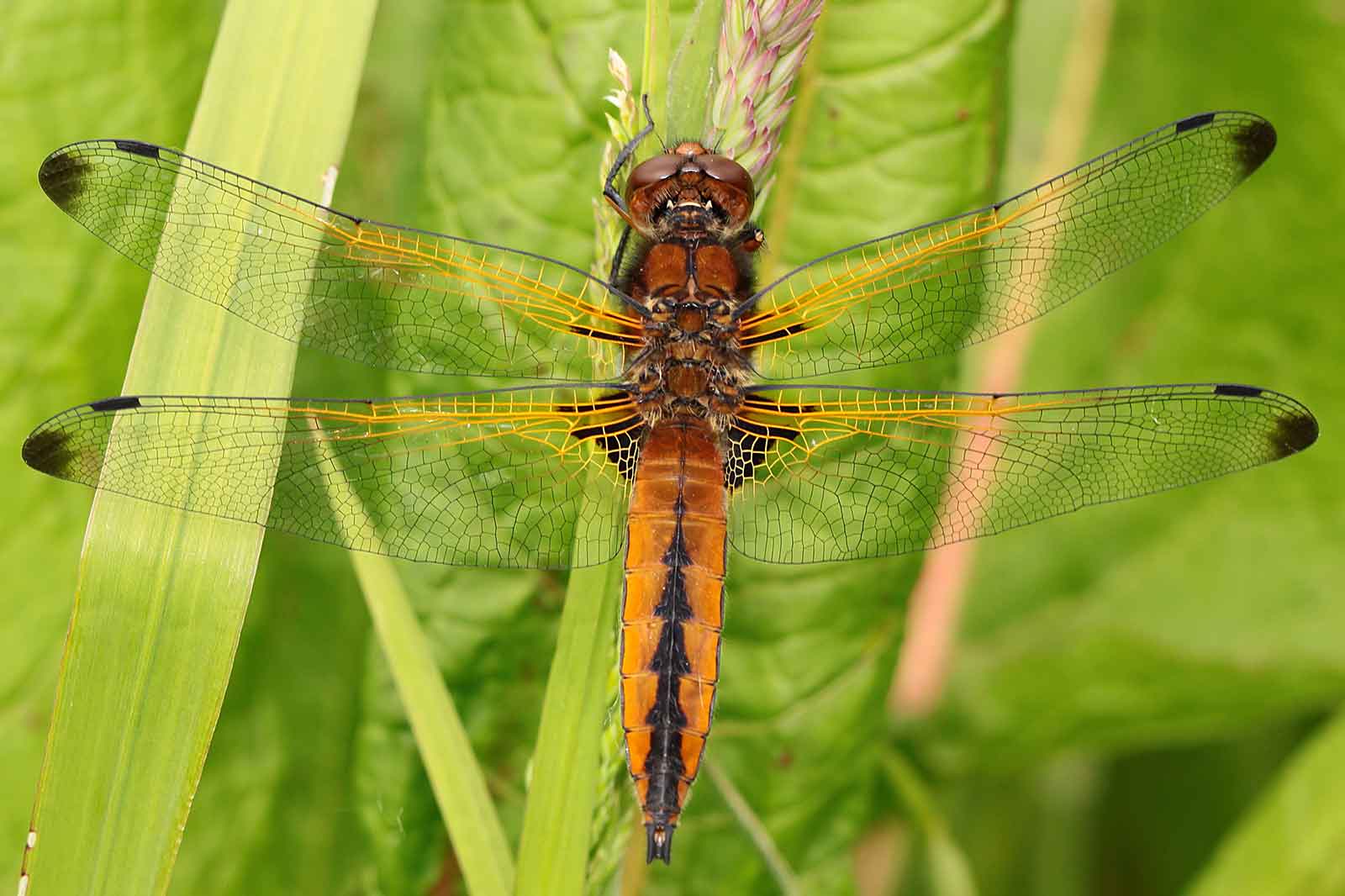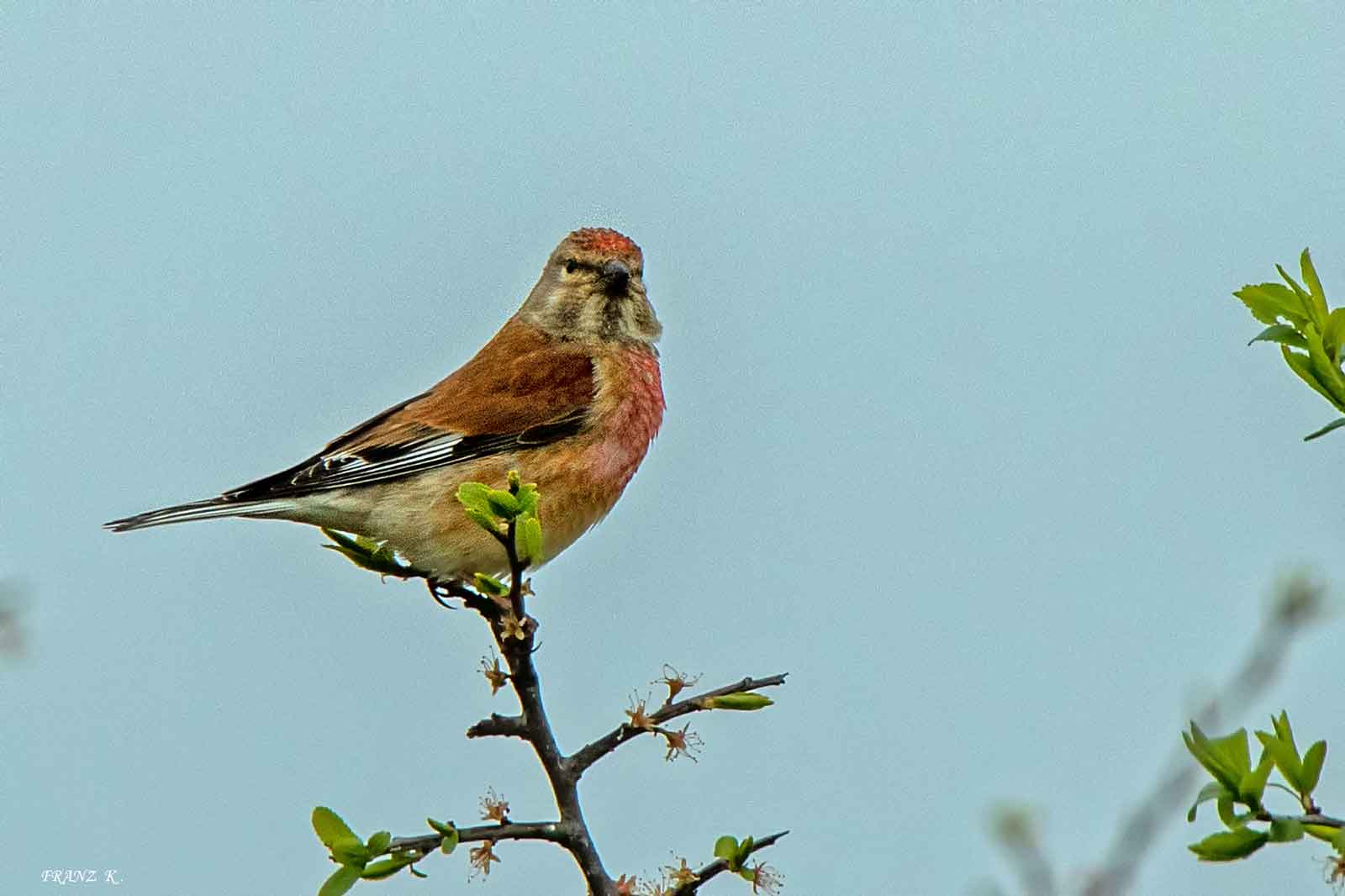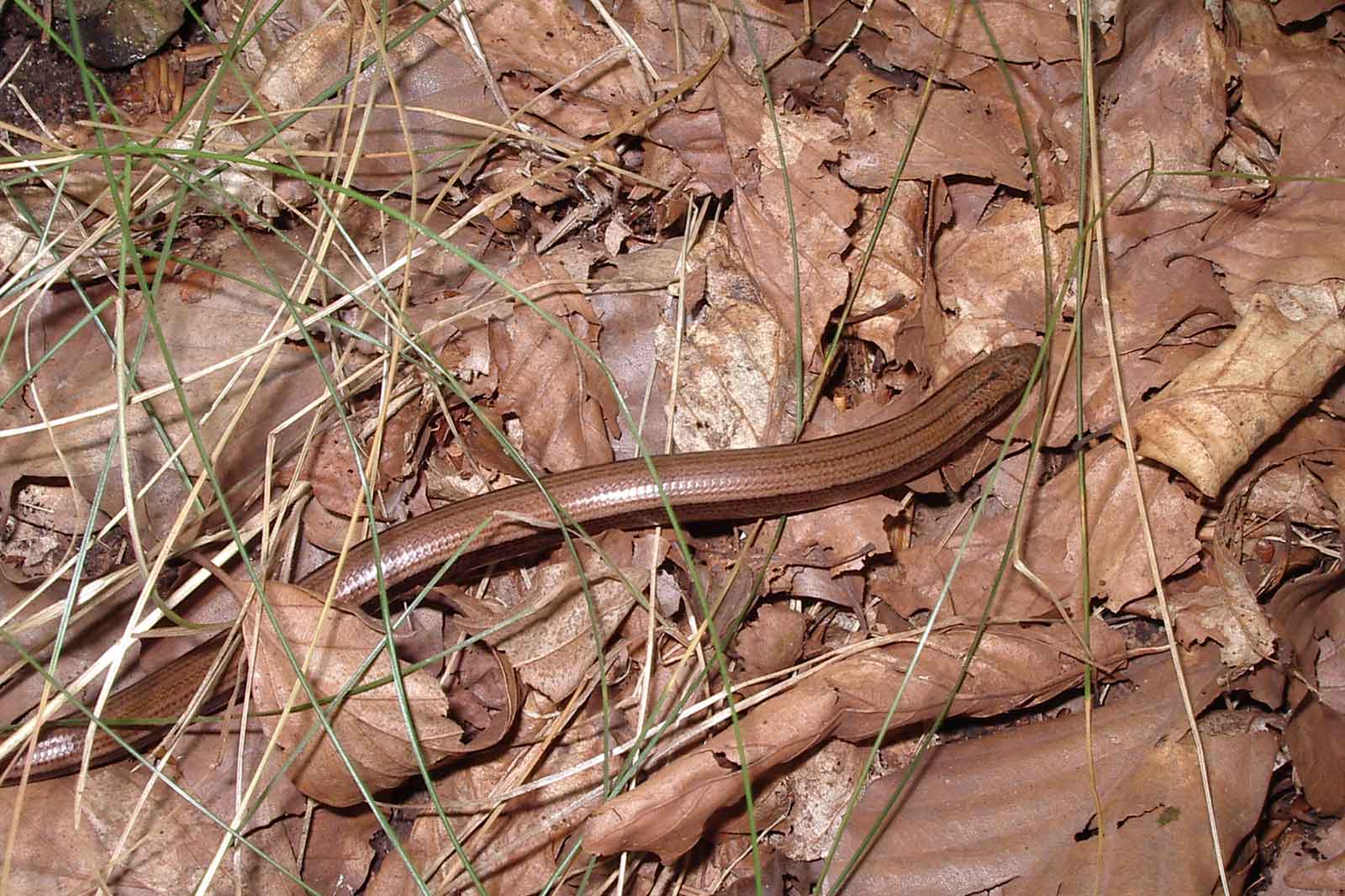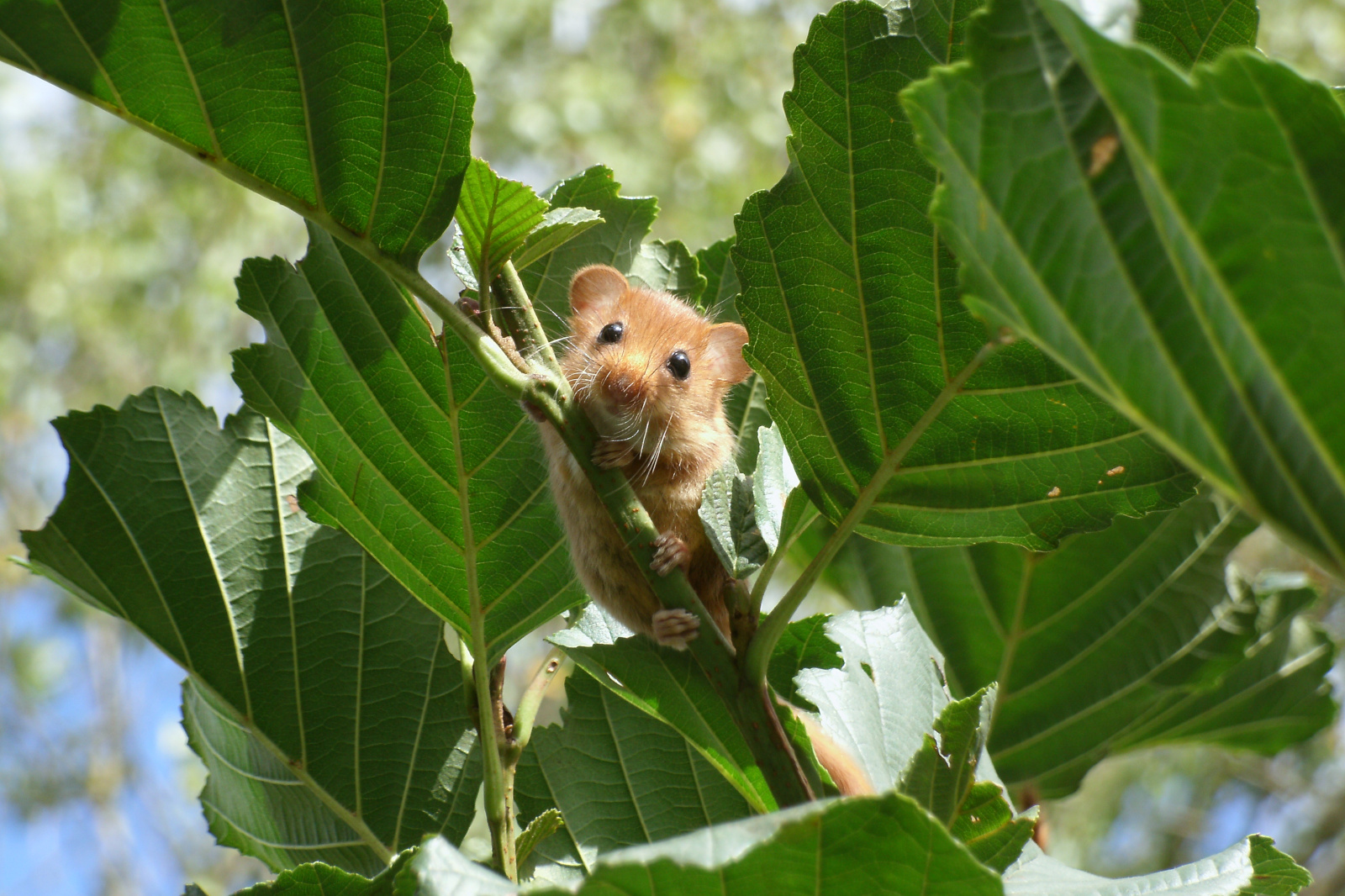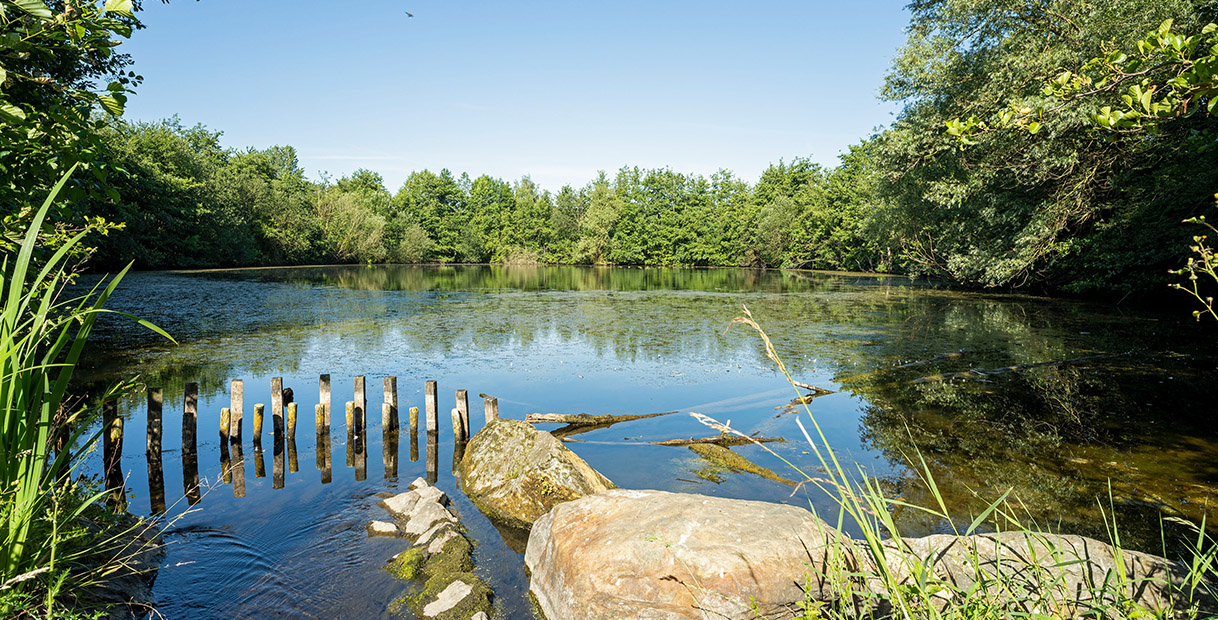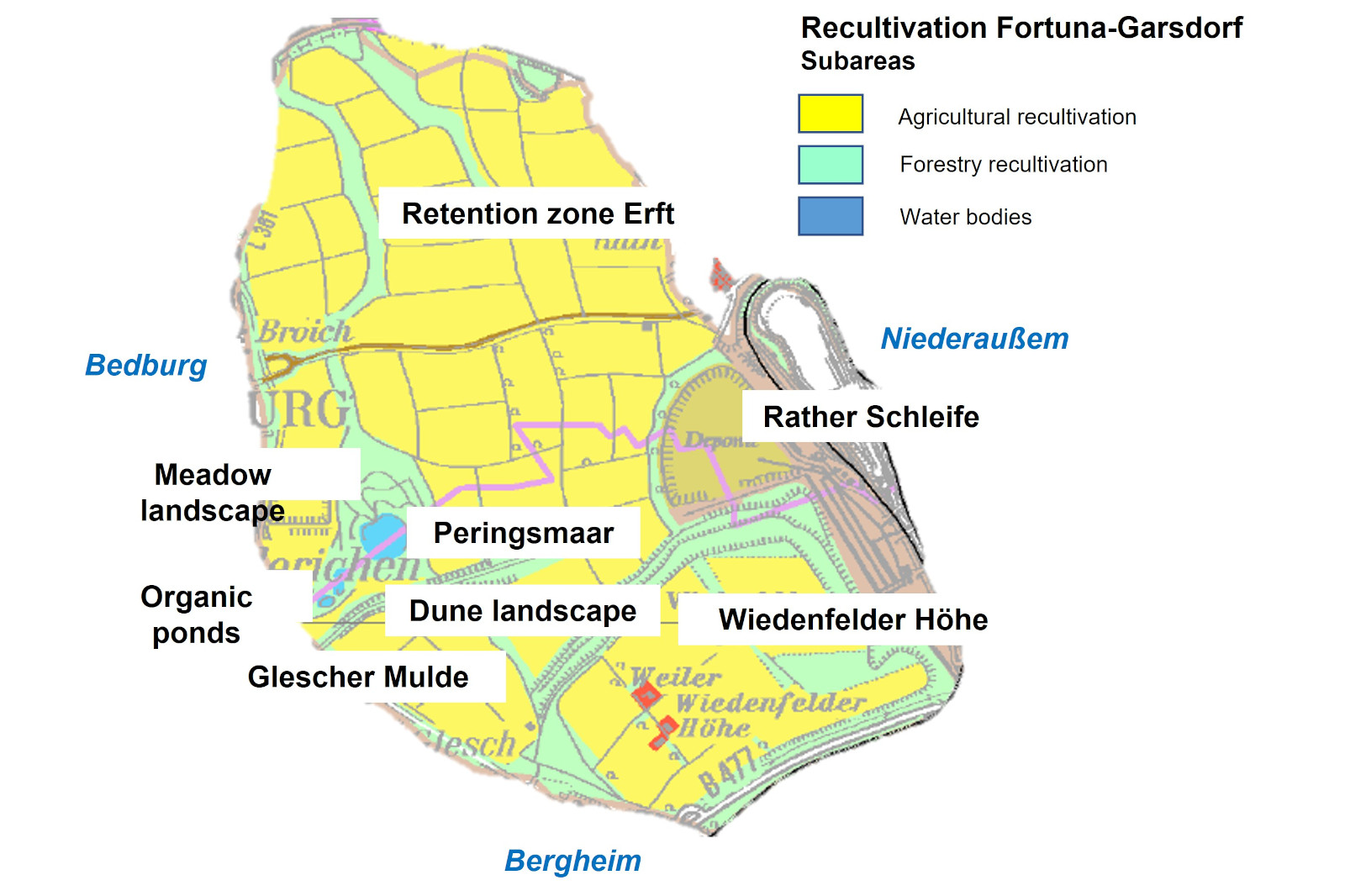
Completed recultivation
Forestry recultivation: approx. 515ha
Agricultural recultivation: approx. 1460ha
History
Mining operations at the Fortuna-Garsdorf opencast mine began in 1955. With a total area of 2,280ha, it was at times considered one of the world’s largest opencast mines. The last tonne of lignite was removed from the opencast mine in May 1993. Initially, material was transported to the Glessener Höhe outside dump and Alt-Fortuna-Fischbach-Beisselsgrube by train. Sections of the north-south railway were actually integrated into the opencast mine for the transportation of material. The route described a long curve, allowing the heavy overburden trains to overcome the grade coming out of the opencast mine. This loop known as the ‘Rather Schleife’ is located between Rath and Auenheim. Later on, the modern large-scale opencast mines switched to belt conveyors.
Subareas
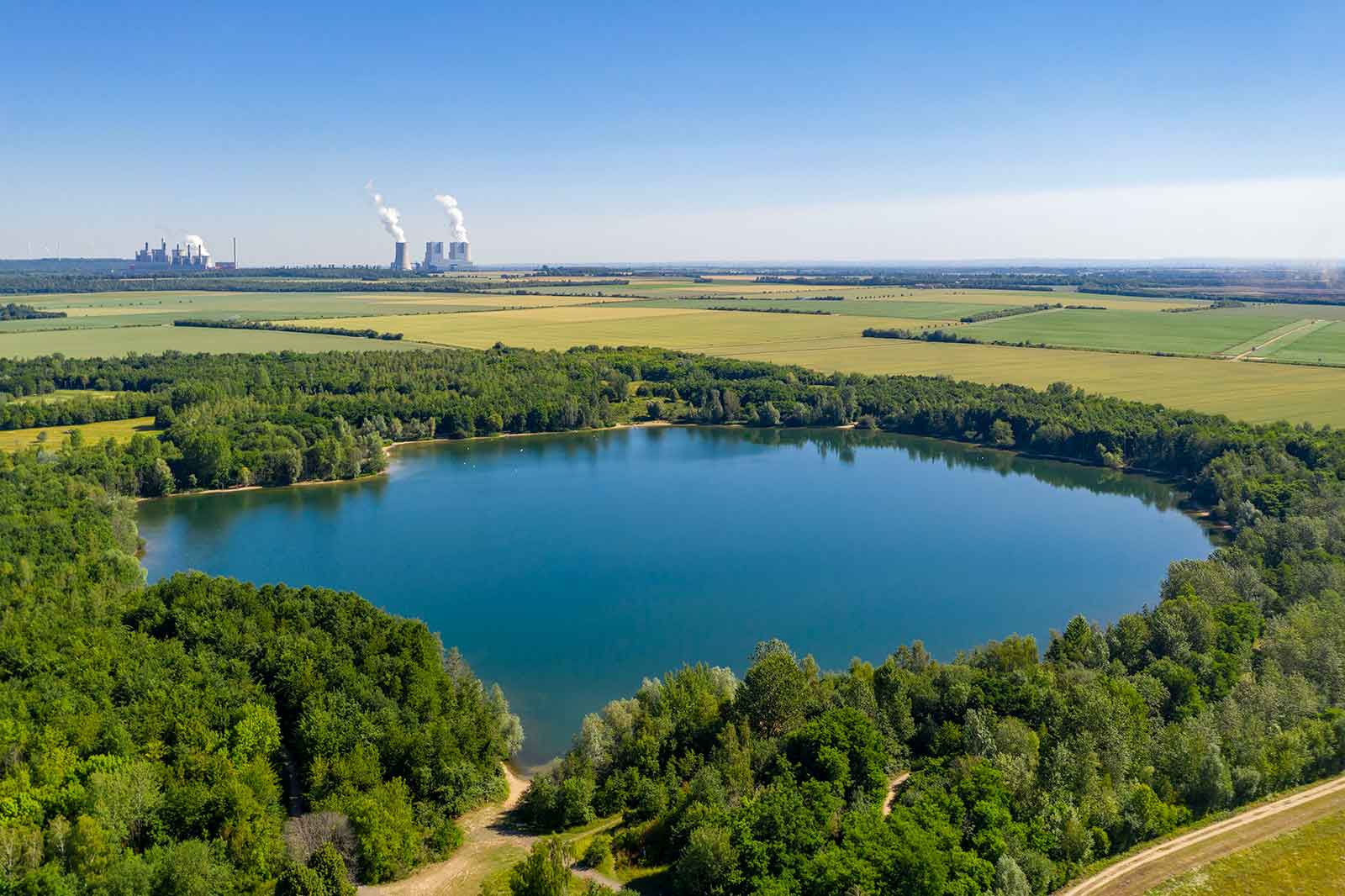
The recultivation of the Fortuna-Garsdorf opencast mine, completed in 2004, is a typical example of modern recultivation planning with agricultural and forestry areas in close proximity to each other along with zones reserved exclusively for ecological purposes. Embedded in the farmlands, a green space of approximately 120ha was created in 1988, directly adjacent to Bedburg. It encompasses three ponds and a 100ha meadow landscape, serving as a retention zone for the Erft river when needed. The green space is home to the Peringsmaar, a scenic lake approximately 20ha in size and protected against flooding from the Erft by a dam. It is named after the Peringser Hof that used to be located here. Two larger wetlands called organic ponds were established in a zone of about 10ha within the meadow landscape where the development of the flora and fauna is largely undisturbed. These habitats are supplied only by surface water from the immediate catchment area. The three ponds organically treat the water for the Peringsmaar. A dune landscape is located farther south, offering a habitat for many rare animal and plant species with lean turf and nutrient-poor soils. This was the route of two belt conveyors from the Hambach opencast mine to the Fortuna opencast mine, transporting the material for backfilling. Extending away from the retention zone, the Glescher Mulde forms a link to the reforested slopes of the Wiedenfelder Höhe. It fulfils important ecological functions as a green belt in the agricultural recultivation, a link in the habitat network that connects the forest areas of the Peringsmaar to those of the Wiedenfelder Höhe, a slightly raised inside dump forming a level plateau that is reserved for agricultural use.
Special ecological features
More than 600 plant and fungus species and around 800 animal species have been recorded in the Fortuna-Garsdorf recultivated area to date, and a systematic study of some animal groups is still pending. Many of these species are endangered and on the Red List.
Some of the rare and endangered animal and plant species are:
Birds: Skylark, corn bunting, partridge, quail, little grebe, great crested grebe, Montagu’s harrier, lapwing, little ringed plover, turtle dove, cuckoo, red-backed shrike, oriole, wood lark, wood warbler, nightingale, wheatear, meadow pipit, linnet
Mammals: Brown hare, hazel dormouse
Amphibians: Natterjack toad, green toad, agile frog
Reptiles: Sand lizard, slow-worm
Wild bees: Spiny mason wasp, black-headed mason wasp, clover blunthorn bee, blunthorn nomad bee
Grasshoppers: Blue-winged grasshopper, two-spotted grasshopper
Butterflies: Pale clouded yellow, black-veined white, large wall brown, wall brown, white admiral
Dragonflies: Scarce blue-tailed damselfly, hairy dragonfly, scarce chaser, yellow-winged darter
Orchids: 10 different native species, including southern marsh orchid, bee orchid, military orchid
See our list of species for more.
